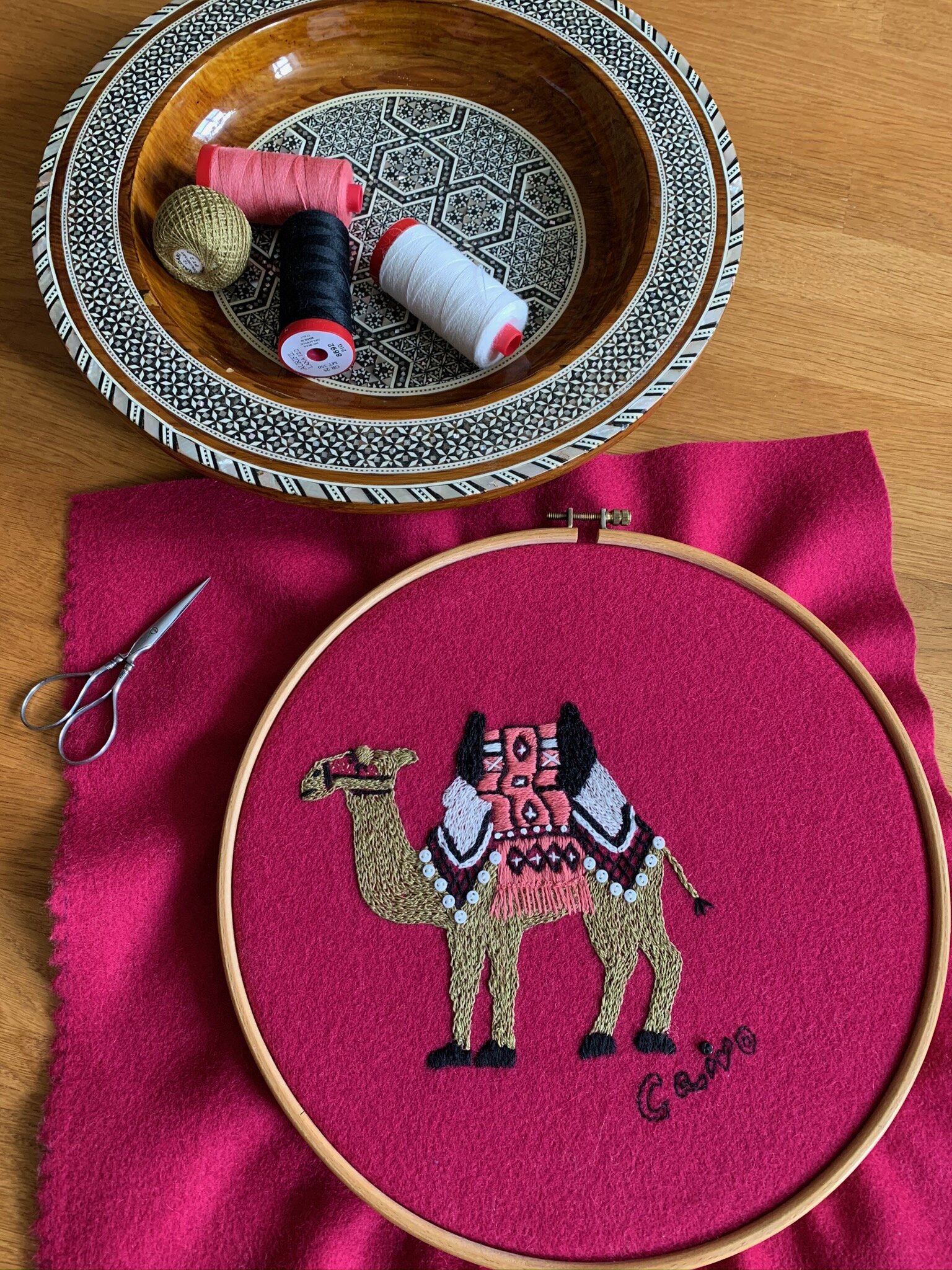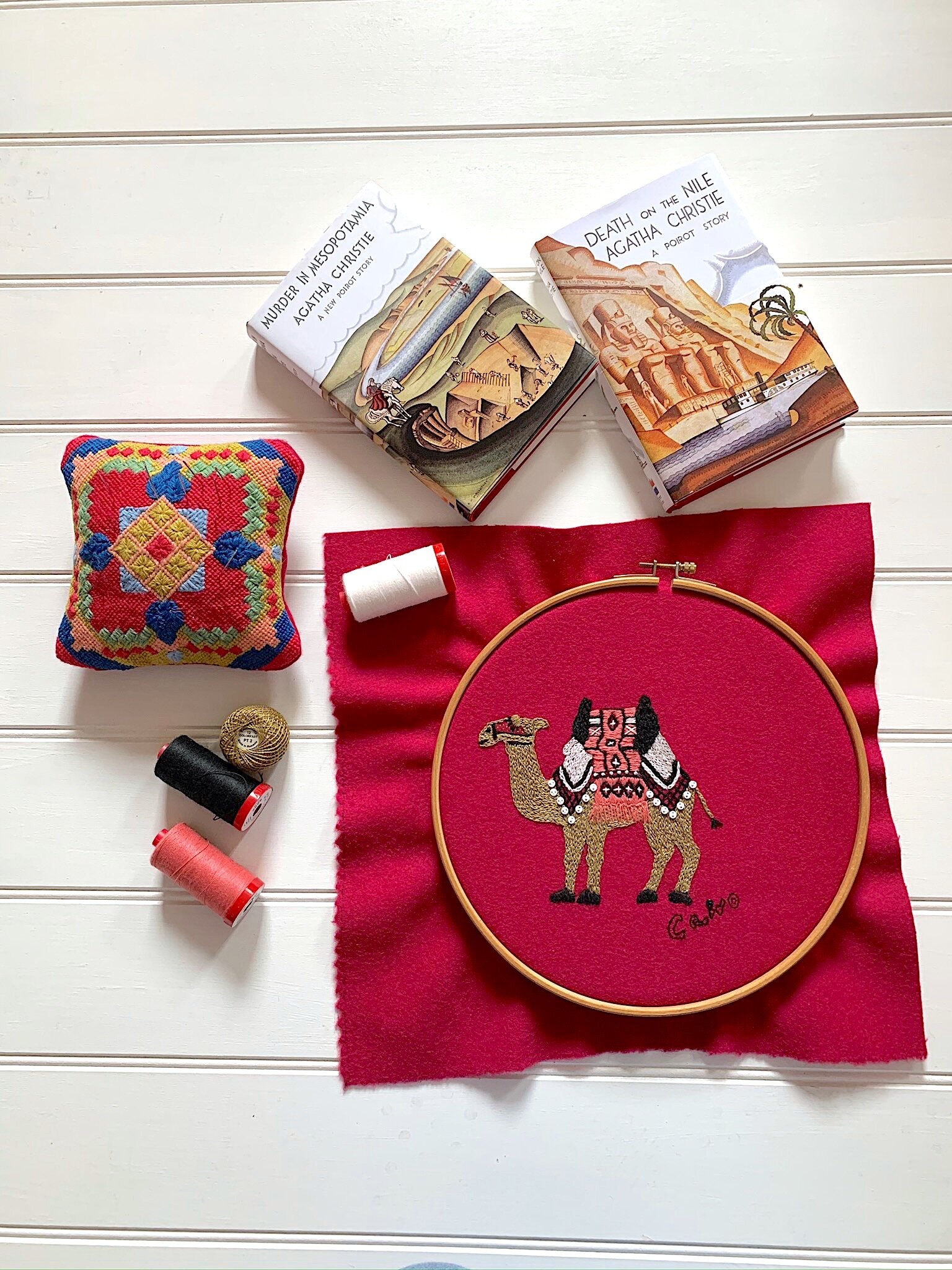Yumiko Higuchi embroidery books
/I am a complete nut for japanese sewing books…I have quite a collection, can’t understand a word of them, but drool endlessly over the clean, spacious, photographs that make my heart beat faster. I suppose it’s the fascination of a different approach to things that you find in cultures other than your own that is really the attraction, but I think it goes further than that with me. Years ago when we were on an overseas posting in Moscow, I was lucky enough to host a weekly class on Russian embroidery, taught by a real master of the art, Lydia Ivanova. This class was run by the International Women’s Club and was open to all nationalities and indeed all nationalities came. I loved the international flavour of this group, but it was always the Japanese ladies who fascinated me the most. Neat and petite, their immaculate appearance was mirrored in their approach to needlework. They always had beautifully tidy organiser boxes of threads, colour coded and labelled. Their work was perfect and delicate and almost ethereal. They were quiet and calm and measured and very studious in their approach to this new form of embroidery. They sought accuracy and perfection. Pretty much every other nationality was not like this, leaning towards a chaotic more haphazard approach and the Japanese ladies stood out as exemplary students.
A few years later we had the chance to go to Japan and it was to prove one of the best holidays we have every had. It was a total cultural experience and everything I’d dreamed off. The gardens were one of the highlights for me and the exquisitely manicured approach reflected the way they way I had seen them sew in Russia. Japanese sewing books reflect all of this, whether it is dressmaking or embroidery, everything is neat and thought out and has a sort of clever simplicity about it, that belies the real thought behind it. In the quilting world they have their own champions and I confess the sort of taupe, beige shades of their quilts are not usually for me, even though I admire the incredible craftsmanship (often hand appliqué) that goes into these pieces of art. Embroidery is different though - whether it is Sashiko (a simple running stitch that forms patterns on plain cloth) or the absolutely stunning and intricate work of a textile artist like Yumiko Higuchi, I am open mouthed as I look at every page of the books.
Using largely floral motifs to embellish everything from , blouses to bags to belts to cushions and even to dolls clothes, this sort of work is all about taking care to make something absolutely beautiful. The Higuchi books have inspired countless projects for me, including one of my most recent, an all over embroidered woodland scarf.
With lockdown on, my embroidery books have been a constant source of delight, especially with my early morning cup of tea. One of Yumiko Higuchi’s more recent books focuses on animal motifs and they are just so utterly gorgeous you want to make everything. As travelling seems off the cards for the time being, I thought it might be nice to make some reminders of trips gone by and the Camel in the book drew my attention. It is about 6” square and the embroidery is intense and precise - I was nervous. I didn’t know if I had the skill to tackle this or not, but figured it was a small project so why not have a go.
I chose to use a piece of beautiful ruby red wool for the base. I had bought some of this fabric in Stockholm on my last visit and it’s been waiting quietly in the box to make it’s appearance. As it is always difficult to transfer designs on to fabric, I photocopied the page in the book and made a stencil, which allowed me to get the outer lines correct. I filled in the details by hand, simplifying them a little. Using perle cotton #8 for the embroidery I tried to follow the picture as much as possible. I was rather concerned about the use of chain stitch as a filler, but this is often shown in these books and always looks amazing. As I worked, I realised that actually because it is an animal, any irregularities in stitch size probably wouldn’t matter as it is suppose to be like fur. I used aurifil lana wool thread for the stitching. I wasn’t sure about this but wool on wool seemed logical and actually it was a joy to use. The thread is fine so you can really define the lines and shapes of your design.
My little chap actually turned out ok and I added in the word ‘Cairo’ to remember a wonderful holiday spent exploring with my brother’s family and a whole heap of kids. I had always planned to make it into a cushion, so found some lovely red and white striped ticking and pompom trim and I was away.
I stuffed my cushion with all the left over scraps from quilts chopped up and it made for a charming project. I am over the moon with this and feel inspired to challenge myself to more projects from these glorious books.
Embroidery is such a magical thing. It transforms a plain piece of fabric into something utterly unique. Everyday I see wonderful photos on instagram of japanese craftsmanship on garments and home furnishings and find them peaceful - they are a return to slow fashion and a way to make your things into treasure. Yumiko Higuchi’s books are the epitome of this - every single page is just so beautiful and I never get bored of looking at them. If you have some knowledge of embroidery, it doesn’t matter a fig that you can’t understand them and infact the japanese text just adds to the mystery of the books. They are visual gems and if you love embroidery you will love these. Versions of the books with some english text are now available here - you can find them online at gorgeous shops like Loop in London. The japanese versions are often for sale on Etsy too.
I love that when I look at this, I am transformed back to standing outside the museum in Cairo - it felt like a scene from ‘The English Patient’ … pity Ralph Fiennes wasn’t there……










